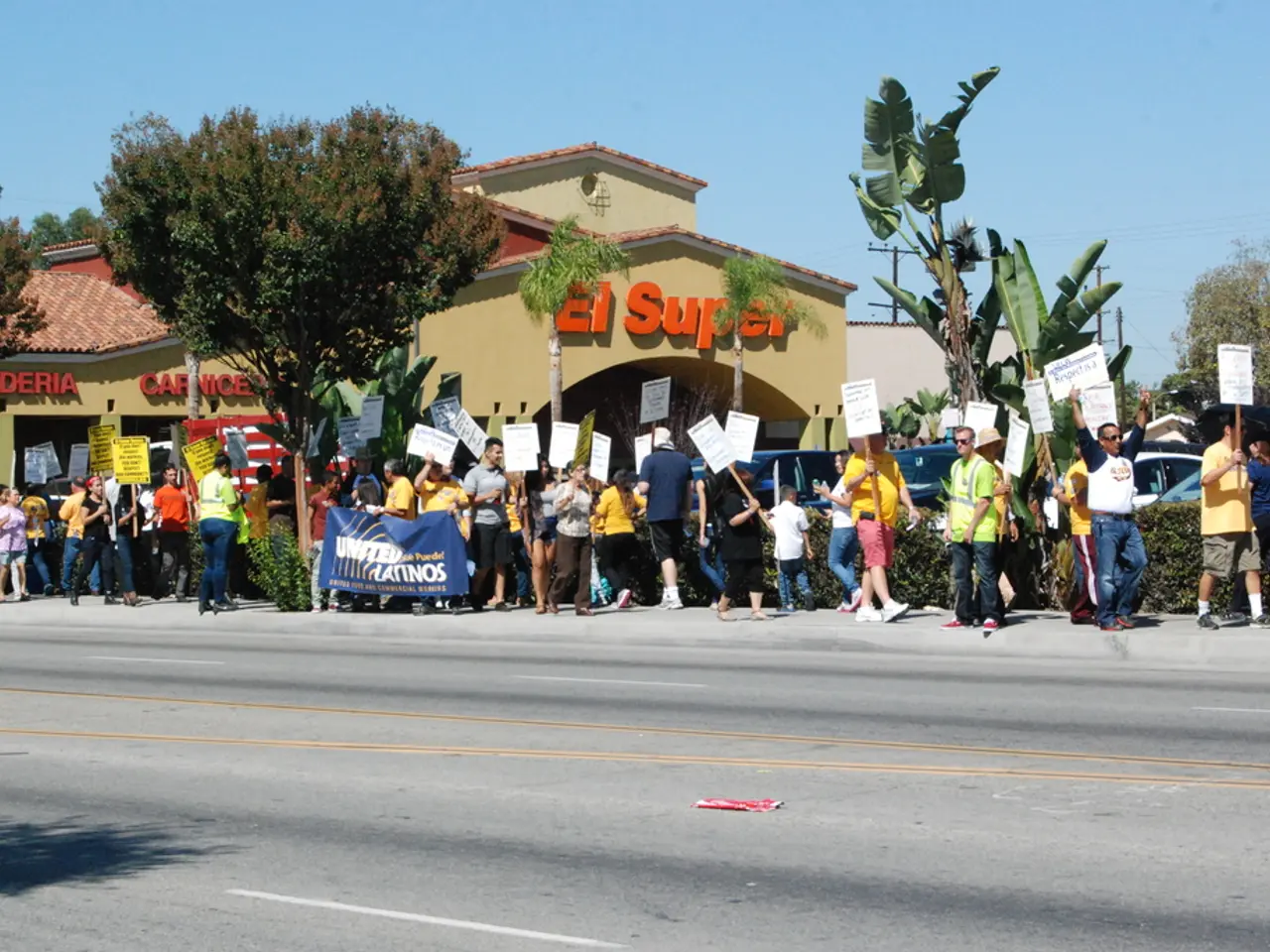Forced displacements in the Gaza Strip
In the troubled region of Gaza Strip, a humanitarian crisis of catastrophic proportions is unfolding. The conflict, which began in October 2023, has left a devastating impact, with over 58,000 Palestinians killed and more than 139,000 injured, according to reports from Gaza's Health Ministry and multiple United Nations agencies [1][2].
The Gaza Strip, home to over 2 million people, is currently experiencing a severe humanitarian crisis. Approximately 90% of the population is internally displaced, often multiple times, and confined to just 12% of the territory due to Israeli military restrictions and evacuation orders, particularly following the bombing of Deir al-Balah [1].
The extensive civilian casualties, massive displacement, and severe shortages of food, medicine, and shelter have raised fears of famine. Most civilian infrastructure has been destroyed or severely damaged, hospitals are largely closed, and food supplies are critically low [1][2].
The Israeli military operations continue with heavy bombardments by air, land, and sea, causing extensive civilian harm, including strikes on shelters such as schools and tents. These actions have raised concerns that they may violate international humanitarian law principles due to their disproportionate impact on civilians and the obstruction of humanitarian aid [2].
Aid access has been severely restricted for months, with UNRWA unable to bring humanitarian supplies into Gaza since early March 2025, and only limited entry allowed for selected UN agencies and NGOs under tight Israeli control [2]. However, in response to international pressure over the worsening crisis, the Israel Defense Forces announced temporary humanitarian pauses—periods during which military operations are halted to allow the delivery of aid and access for UN and aid groups. These pauses started on July 27, 2025, with air drops of food supplies, including contributions from Jordan and the UAE [3].
Politically, the conflict remains intense between Israel and Hamas, with Israel conducting ongoing military offensives aimed at dismantling Hamas infrastructure and Hamas continuing armed resistance. Internationally, 28 countries, including France and the UK, have called for an end to the fighting, urging Israel to cease military actions to prevent further humanitarian catastrophe [1].
The trauma of the October 7th, 2023 massacre in Israel has exposed Hamas' armament and willingness to use violence. The future of the Gaza Strip remains uncertain post-war, with Hamas resorting to guerrilla warfare and its government-like structures having almost completely collapsed [4].
References:
[1] Associated Press. (2025, July 28). Gaza Strip faces dire humanitarian crisis amid ongoing conflict. Al Jazeera. https://www.aljazeera.com/news/2025/7/28/gaza-strip-faces-dire-humanitarian-crisis-amid-ongoing-conflict
[2] United Nations Office for the Coordination of Humanitarian Affairs. (2025). Gaza Crisis: Humanitarian Response Plan 2025. https://www.ochaopt.org/content/gaza-crisis-humanitarian-response-plan-2025
[3] United Nations News. (2025, July 27). Gaza: Air drops of food supplies as Israel announces temporary humanitarian pauses. https://news.un.org/en/story/2025/07/1083492
[4] The Jerusalem Post. (2025, July 29). The trauma of the October 7th, 2023 massacre in Israel runs deep, exposing Hamas' armament and willingness to use violence. https://www.jpost.com/middle-east/article-724552
- Despite the ongoing war-and-conflicts in the Gaza Strip, temporary humanitarian pauses have been announced by the Israel Defense Forces, allowing for the delivery of aid and access for UN and aid groups.
- Amid the crisis, the future of the Gaza Strip post-war is uncertain, with Hamas resorting to casino-culture as a means to generate revenue, posing a new challenge in the politics of the region.
- As the conflict between Israel and Hamas intensifies, the international community is paying attention to general-news regarding the crisis, including reports of crime-and-justice, such as the obstruction of humanitarian aid and the violation of international humanitarian law principles in the region.




